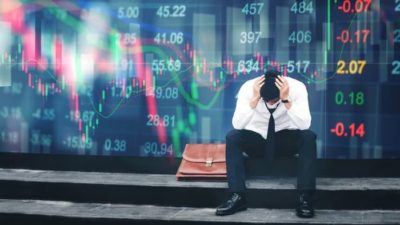AMP Ltd (ASX: AMP) chief economist, Dr Shane Oliver, has been in the investment game for 40 years.
So, we think he probably has some good advice for all of us regarding our ASX share investing.
In a recent blog, Dr Oliver shared a bunch of insights gleaned over four decades of investing. Many of them relate to ASX shares investing and how we should go about building our wealth via this channel.
Here are seven of Dr Oliver's tips for successful investing.
7 tips for successful ASX shares investing
1. Make the most of the power of compound interest
Dr Oliver says compound interest is one of the best ways to build wealth through investing, whether it be via ASX shares, real estate investment or other asset classes. But he says we must have the right asset mix.
Dr Oliver comments:
Based on market indices and the reinvestment of any income flows and excluding the impact of fees and taxes, one dollar invested in Australian cash in 1900 would today be worth around $259 and if it had been invested in bonds it would be worth $924, but if it was allocated to shares it would be worth around $879,921.
His key message is we need to have decent exposure to growth assets like ASX shares and property.
A popular compounding strategy in ASX shares investing is dividend reinvestment, which is made easy by dividend reinvestment plans (DRPs).
Many ASX shares have DRPs, including Commonwealth Bank of Australia (ASX: CBA) and BHP Group Ltd (ASX: BHP), along with many ETFs, such as the Vanguard Australian Shares Index ETF (ASX: VAS).
2. Don't get thrown off by the cycle
Dr Oliver notes the three to five-year business cycle, longer secular swings over 10 to 20 years in shares, and cycles that centre around some sort of crisis, which tend to pop up roughly every three years.
Dr Oliver points out that shares often lead economic cycles, so economic data lags behind market trends.
3. Invest for the long term
It's simply too difficult for most average investors to predict financial markets' ups and downs. So, it's best to play a long game with ASX shares investing and other investment assets.
Dr Oliver recommends creating an investment strategy that suits your level of wealth, age and ability to tolerate the volatility inherent in shares investing.
4. Diversify your ASX shares and other investments
Investors need to find a balance between not putting all their eggs in one basket and over-diversifying, as this will complicate your investments "for no benefit", Dr Oliver says.
Here at The Fool, we advocate diversification and note the increasing popularity of exchange-traded funds (ETFs) today. ETFs allow investors to buy a basket of ASX shares or overseas stocks in a single trade.
5. Turn down the noise
Dr Oliver notes the world is getting noisier with the rise of social media.
He says:
After having worked out a strategy that's right for you, it's important to turn down the noise on the information flow and prognosticating babble now surrounding investment markets and stay focussed. In the digital world we now live in this is getting harder.
6. Buy low, sell high
The cheaper you buy an asset, the higher its prospective return will likely be and vice versa, says Dr Oliver.
He says:
Guides to this are price-to-earnings (P/E) ratios for shares (the lower the better) and yields, ie, the ratio of dividends, rents or interest to the value of the asset (the higher the better).
Flowing from this it follows that yesterday's winners are often tomorrow's losers – as they get overvalued and over loved.
7. Beware the crowd at extremes
Beware the herd mentality, as Dr Oliver explains:
We often feel safest when investing in an asset when neighbours and friends are doing the same and media commentary is reinforcing the message that it's the right thing to do. This "safety in numbers" approach is often doomed to failure.
Whether it's investors piling into Japanese shares at the end of the 1980s, Asian shares in the mid-1990s, IT stocks in 1999, US housing and credit in the mid-2000s.
The problem is that when everyone is bullish and has bought into an asset there is no one left to buy but lots of people who can sell on bad news.









